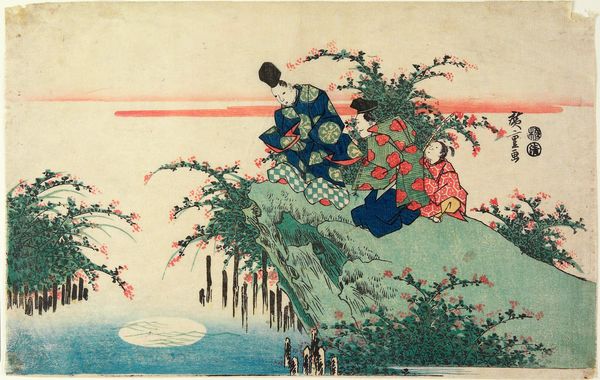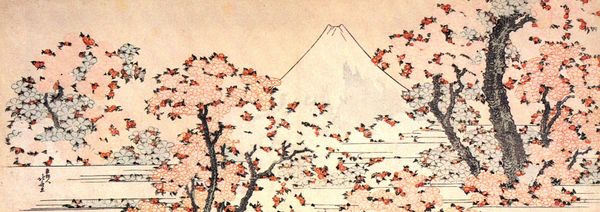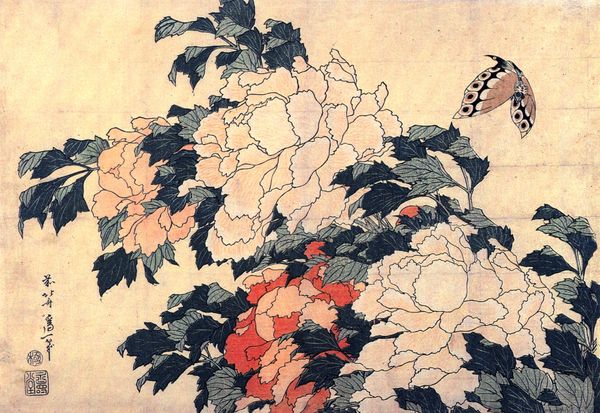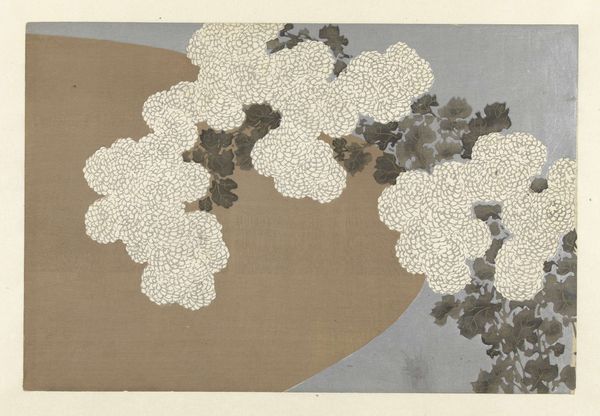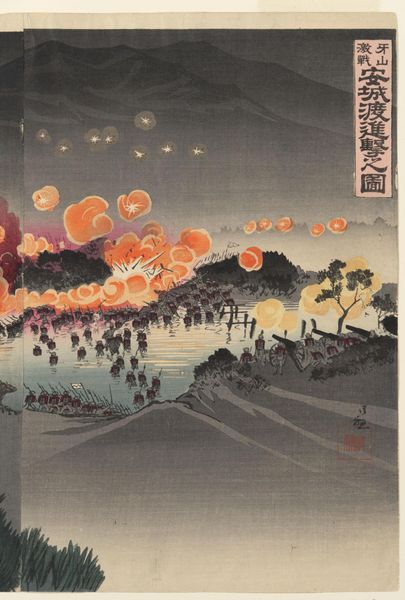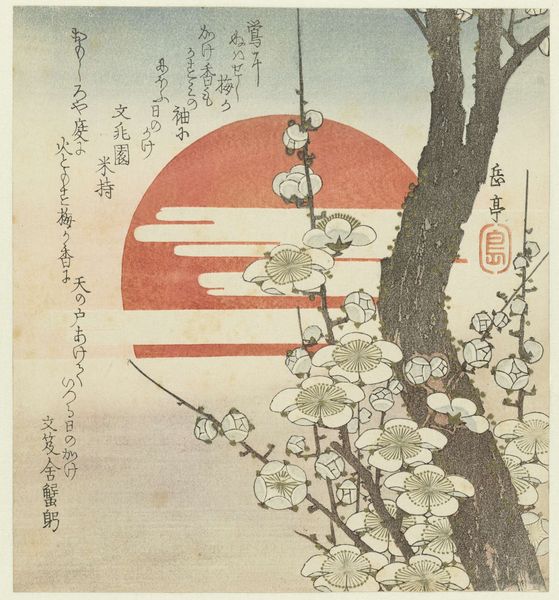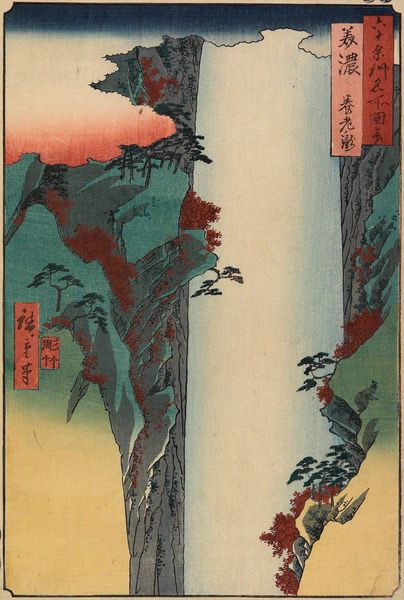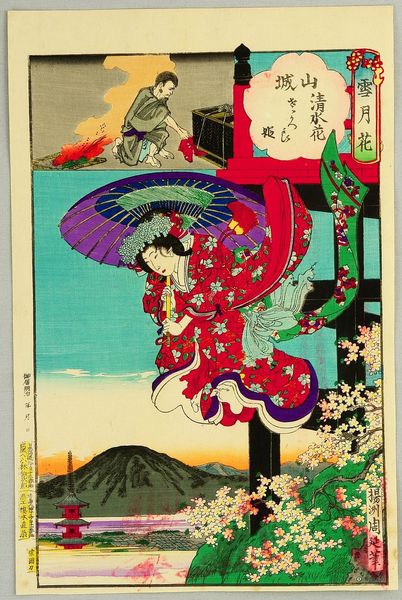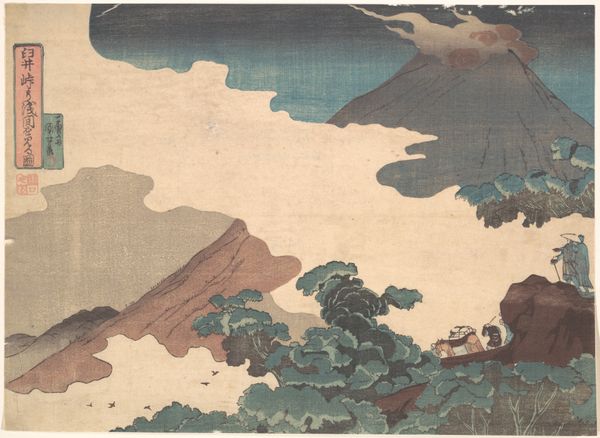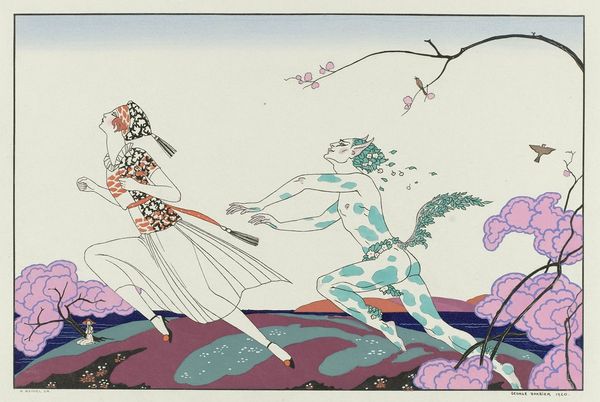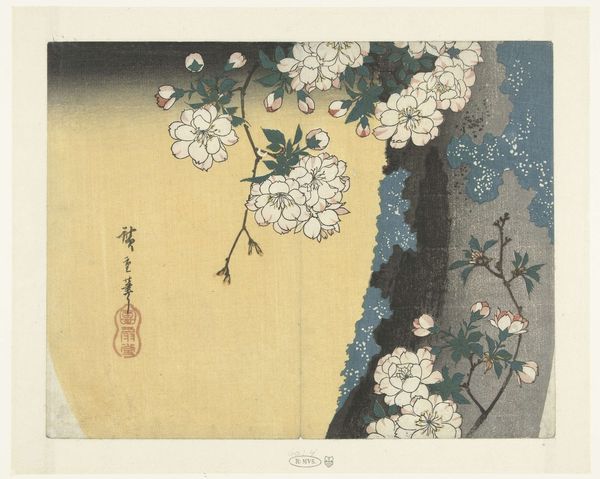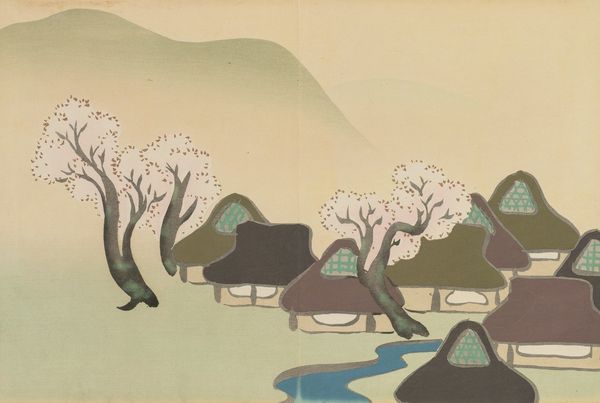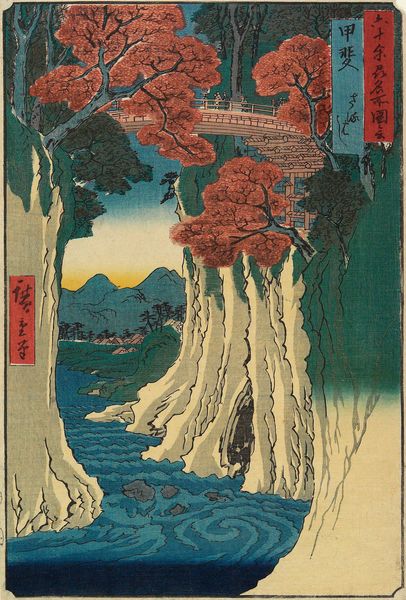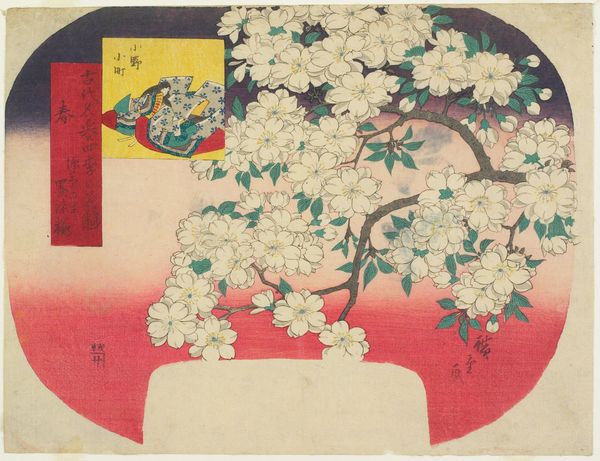
painting, watercolor
#
painting
#
asian-art
#
ukiyo-e
#
watercolor
#
orientalism
#
realism
Copyright: Public domain
Editor: We are looking at Ito Jakuchu's "Chrysanthemums by a Stream, with Rocks," created around 1760. The watercolor work has such an elegant flow of lines, but I'm not sure I completely understand it. What do you see in this piece? Curator: Its organization is quite striking. Observe the undulating compositional structure of the stream. The negative space creates visual tension. How does this tension affect your reading of the rocks and botanical arrangements? Editor: I see the stream creates almost two distinct zones, one with those enormous, cloud-like chrysanthemums at the top, balanced by a similar mass towards the bottom. Is that the artist deliberately creating separate focal points? Curator: Indeed. Notice also how Jakuchu employs two distinct arrangements: One section showing meticulously depicted dark leaves with smaller chrysanthemum, and another grouping of very large blooms and brightly colored smaller flowers. These differences encourage the eye to wander through these individual elements and relate them in meaningful arrangements, but perhaps that there is not meaningful story outside of pure composition. Do you think this challenges our ideas about depth and perspective? Editor: I see what you mean, the flowers almost feel superimposed, creating a kind of flattening effect. Everything seems brought forward. Is this a comment on realism itself, pushing against traditional landscape painting conventions? Curator: Possibly, and in the tension and spatial ambiguity he creates through color, light, and line, a dynamic tension becomes increasingly visible. Perhaps meaning is to be found here in its visual construction, as form and color define an aesthetic world which asks that we find it ourselves, but using Jakuchu's system, which can, but is not demanded to mean anything at all. Editor: Thank you, I hadn’t considered the flattening of space before, but the dialogue of foreground and background becomes a structural tool itself! Curator: Indeed. Considering only line, form and use of space we can create complex narrative simply by describing what we see.
Comments
No comments
Be the first to comment and join the conversation on the ultimate creative platform.
